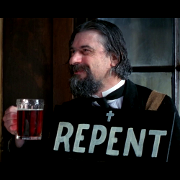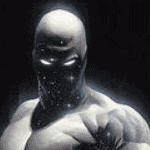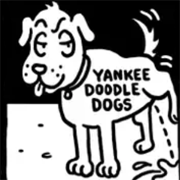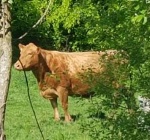|
On this note, I could use a suggestion for a telescope for my 10-year-old cousin's Christmas gift. She's marveled at Jupiter and Saturn through my 8" Dob, but that's a bit much, though I'd still like her to have something better than the Jason Jr. I had as a kid. Maybe something with app connectivity, too. Anyone have recent experience with telescopes for kiddos?
|
|
|
|

|
| # ? May 29, 2024 00:51 |
|
Luceo posted:On this note, I could use a suggestion for a telescope for my 10-year-old cousin's Christmas gift. She's marveled at Jupiter and Saturn through my 8" Dob, but that's a bit much, though I'd still like her to have something better than the Jason Jr. I had as a kid. Maybe something with app connectivity, too. Anyone have recent experience with telescopes for kiddos? Tabletop dobs. They have manual and motorized versions these days. From the little Celestron Funscopes up to Sky-Watcher goto tabletop dobs. Orion and Zhumell has them too.
|
|
|
|
I think I found an astro photo we all need.... https://www.icanvas.com/canvas-print/space-junkie-nid293?fbclid=IwAR1WQALH8c0sIC-o2UEhsXxnTOia_kMDY4kscq1FBwHL4wW-XyvAP7hZqKU#1PC6-40x26
|
|
|
|
Hauled out the old 8" newtonian last night for the occultation. It was a bit chilly at -15C but it was worth it, a very cool experience all around! Video of the actual occultation at 4x speed: https://www.youtube.com/watch?v=udlRbVn9k0Y
|
|
|
Golden-i posted:Hauled out the old 8" newtonian last night for the occultation. It was a bit chilly at -15C but it was worth it, a very cool experience all around! Nice! I was driving through Wisconsin for like 5 hours last night and just as it was about to happen it started to snow.
|
|
|
|
|
Yooper posted:Nice! Thanks for taking the hit! That storm passed through Minnesota a few hours earlier, I thought it would be cloudy so I didn't prep my camera or shooting rig ahead of time. Didn't even start setting up until an hour before occultation, so I'm just happy that I got anything at all.
|
|
|
Golden-i posted:Thanks for taking the hit! That storm passed through Minnesota a few hours earlier, I thought it would be cloudy so I didn't prep my camera or shooting rig ahead of time. Didn't even start setting up until an hour before occultation, so I'm just happy that I got anything at all. Comically enough I was driving from Rochester back to Michigan. It was cool to see the moon peak through every 15 minutes and see it get closer and closer.
|
|
|
|
|
 Surface details visible on Mars! Very surprising given that this is a straight up 1000mm focal length scope, I didn't have time to figure out the back focus for my Barlow lens. Man, planetary imaging is so much harder than DSOs for me.
|
|
|
|
Speaking of: https://twitter.com/AJamesMcCarthy/status/1600749501664612353
|
|
|
|
Ok Comboomer posted:Hi! Apologies if Iím in the wrong place. Iím looking for an amateur astronomy and telescopes thread. Posted this in the other astronomy thread and was sent here. Currently thinking more toward the 8Ē than the 10, largely because the 10Ē does seem that much more unweildy, but primarily due to cost. Itís an almost 40% jump from $800 to $1100, and I think by the point Iím spending $1k+ on a big scope I probably want it to not have a big honking smartphone caddy sticking out of it (or maybe I do? Ed Ting says that people are buying the cheaper StarSense newtonians/refractors to harvest their caddies + software keys to put on their own bigger scopes) But I welcome any criticism and advice, if anybody thinks I should go with a cheaper scope minus the StarSense feature or if the 10Ē/something similar might be a better long term investment/more versatile. I know all of Jack and poo poo, but Iíve been vicariously watching the hobby astronomy and astrophotography spaces for years. Thinking 2023 might be the year I finally pull the trigger on some worthwhile beginner glass. trilobite terror fucked around with this message at 18:40 on Dec 18, 2022 |
|
|
|
Both scopes would be fantastic. The 12" is where these dobs start to feel like wheeling around unwieldy water heaters IMO. The 10 is about the same bulk as the 8, just a bit heavier and thicker, same length. Which is great for comfortable eyepiece height (no tall ladders in the dark), but the 10's focal ratio is shorter than the 8, which makes it more sensitive to collimation error. If the 10" is pushing your budget, definitely get the 8" and at least one eyepiece. If you can only get one, supplement your 25mm plossl with something that has a good planetary 200x magnification. The eyepieces make or break your experience at the telescope, don't go too cheap on them, you get what you pay for usually. 5mm (240x) Baader Hyperion, 70deg FOV, $120, great eye relief Celestron X-Cel LX, 60deg FOV, $100, great eye relief Agena Starguider, 60deg FOV, $65, decent eye relief <-- this whole series is a great value 5.5mm (220x) ES62, 62deg FOV, $150, no experience, not sure it's worth $150 There are plenty of really great options above $200. Pentax XW and Morpheus up to Delos and Ethos. The difference in clarity and comfort is noticeable, and the wider fields of view are luxurious. These are what I use. Don't buy a cheap eyepiece kit. A Barlow can make your 25mm stock eyepiece a 12.5mm, but its eye relief is already 20mm+ and will get even longer and more difficult to use if you Barlow it. You could get a 10mm or 12mm eyepiece, then you'd have 100x or so and you could then 2x Barlow up to ~200x, but I'd rather get two eyepieces in that situation. duodenum fucked around with this message at 20:03 on Dec 18, 2022 |
|
|
|
Ok Comboomer posted:Posted this in the other astronomy thread and was sent here. One thing to consider - there's a difference between the 8" and the 10" when it comes to the primary collimation screws. I don't know why Celestron did this, but you have to use a hex wrench and a Philips screwdriver to adjust the primary mirror. The 10" has thumbscrews which are soooooo much better. Bob's Knob's sells replacement thumbscrews for the primary collimation - $27, but worth it. IMO, if you an swing the weight and budget go for the 10". Not only because of better screws, but mo' mirror = mo' photons for your eye. You get the 8" and you'll be wondering about the 10" to no end. Cry once and enjoy. Take a look at pages 15 & 16 about the screws. Why Celestron made the 8" more difficult - who knows? https://celestron-site-support-files.s3.us-east-1.amazonaws.com/support_files/22470-22471%20SSE%20Dob%20Instruction%20Manual_5Languages.pdf
|
|
|
|
Ok Comboomer posted:Posted this in the other astronomy thread and was sent here. What is the smartphone thing? Is it different from just sticking a $20 smartphone holder on the focuser?
|
|
|
|
PerniciousKnid posted:What is the smartphone thing? Is it different from just sticking a $20 smartphone holder on the focuser? Yeah, thereís a large porthole on the side of the scope with this big olí special assembly with a mirror and a protective cover and youíre supposed to stick your phone in it. Then you use the license key it comes with to download this massive app that supposedly turns your phone into a surprisingly good Goto system that uses plate solving to navigate you around. Normally Iím against gimmicks that lean hard on using your smartphone, especially when they involve bespoke hardware+software dealies but this one is apparently very good and supposedly worthwhile for beginners learning the sky and people who want to do ďGotoĒ things without dealing with clunky standard systems/the cost of motors in the base, etc. Supposedly the setup time, and the time between getting the scope outside and actually seeing things that you want to see, are much faster. The downside, of course, is that youíve got a scope that for all intents and purposes is relatively eternal and evergreen (there doesnít appear to be any negative effect on the scopeís ability to function as a regular Dob), but which has a big hole with a weird dock attached to it that you might not be using past a certain point, or that frankly might not even have ongoing support for said feature. And if you ever decide to take it anywhere it lets everybody know that youíre a scrub loser who bought the iPhone telescope. Supposedly thereís a technical reason for why you need the dock for the navigation and you canít just use an eyepiece adaptor. FWIW you canít really do phone photography from the dock, and you would need an eyepiece adaptor (and possibly a second phone) for that. trilobite terror fucked around with this message at 07:14 on Dec 19, 2022 |
|
|
|
Ok Comboomer posted:
Your smart phone needs to be in the dock as the dock has a piece that direct light to you phone's camera. The app then uses that image to plate solve and know where the telescope is pointing. Technically, this is a "push to" system and not a "goto". The latter refers to those mounts with the computerized motorized systems that after an alignment will automatically goto a location after you pick one. The motors do all the work. The Celestron SE telescopes are well known popular examples. These two Celestron StarSense dobsonians are push-to types like Orion's Intelliscope dobsonians. The only two commercial brands of true goto dobsonians I know of are from Sky-Watcher and Orion. Orion has had major supplier issues and other problems (they are suing Celestron...again) thus really only Sky-Watcher has true goto dobs right now.
|
|
|
Ok Comboomer posted:Yeah, thereís a large porthole on the side of the scope with this big olí special assembly with a mirror and a protective cover and youíre supposed to stick your phone in it. Then you use the license key it comes with to download this massive app that supposedly turns your phone into a surprisingly good Goto system that uses plate solving to navigate you around. I have an 8" Dob that I 3d printed an adapter for my Starsense holder. My Dob did have the factory push-to encoders and it sucked. Push too fast, lose position. Slide back, backlash, lose position. Anyone who looks down on the StarSense system is a loving elitist that can suck my dick. This system has gotten so many people excited about astronomy. Guests will be over and can intuitively steer onto something cool, on the list, and get almost instant gratification. Kids see that giant scope and can just push it, follow the screen, and see awesome stuff. I loving love it. No one gets excited about my AP rig, but people are magnetically drawn to that Dob with a smartphone on the side. If I showed up at a star party and some rear end in a top hat called me out for having the loser telescope I'd loudly call them out for being a grade A dick. If this gets you excited to drag that scope out, then hell yah, it's good. The downside is you can go through that nightly list of "cool stuff" kind of quickly. But you can tap on the screen and select your own location so I'll find other interesting looking targets and keep hunting.
|
|
|
|
|
agreed with yooper. i can't imagine being the kind of weirdo that'd give someone poo poo for buying a telescope that's, what, not hardcore enough? and if they did, man, that says a lot more about them than about me.
|
|
|
|
Seems it'd be great for finding things in a suburban light polluted back yard.
|
|
|
duodenum posted:Seems it'd be great for finding things in a suburban light polluted back yard. I know the full moon can prevent it from plate solving position. It warns you if it thinks it'll have issues. Its been a few years since I've lived in town, but I recall if I was pointed in the vicinity of a street light it could have a hard time solving.
|
|
|
|
|
Yooper posted:I know the full moon can prevent it from plate solving position. It warns you if it thinks it'll have issues. Its been a few years since I've lived in town, but I recall if I was pointed in the vicinity of a street light it could have a hard time solving. They just replaced the street light bulb in front of my house and it's an LED throwing about 6 billion lumens. 
|
|
|
|
Liquid Chicken posted:Your smart phone needs to be in the dock as the dock has a piece that direct light to you phone's camera. The app then uses that image to plate solve and know where the telescope is pointing. That's interesting. Is there a technical reason an app can't do that with a normal eyepiece adaptor?
|
|
|
PerniciousKnid posted:That's interesting. Is there a technical reason an app can't do that with a normal eyepiece adaptor? Like 5 minutes after it was released there was a few nerds over at CloudyNights who fabricated a mirror holder, determined the proper angle, and had it mounted to big rear end dobs. The Celestron dev popped into the thread and basically said they expected people to copy it, but underestimated how quickly it would be done.
|
|
|
|
|
Yea, turns out I was wrong about the StarSenseóthere isnít a hole in the scope, the phone just sits in the caddy and the mirror points straight at the unmagnified night sky. So there would be no way to capture a good photograph through the StarSense mount and likewise running the phone through your eyepiece wouldnít allow the software to accurately work. There appears to be a stand-alone StarSense system that utilizes its own camera module and a hand controller, apparently thereís a version specifically for SkyWatcher GoTo dobs. Itís $650. So I guess the question becomes ďis $1100/$800 a good price for this scope? Are you paying for a fancy software system and getting the scope for cheap, or are you buying a decent scope and getting the software system for cheap/free?Ē Liquid Chicken posted:Technically, this is a "push to" system and not a "goto". The latter refers to those mounts with the computerized motorized systems that after an alignment will automatically goto a location after you pick one. My bad. I was treating both terms interchangeably, but after doing a bunch more research I now realize that the distinction exists for a reason and that people in the hobby are nothing if not sticklers for accuracy.
|
|
|
|
PerniciousKnid posted:That's interesting. Is there a technical reason an app can't do that with a normal eyepiece adaptor? Ya need the eyepiece for a' peeping. Actually, maybe it could but I don't know if anyone has tried to engineer a way yet. Ok Comboomer posted:
There's the StarSense Camera system. It's definitely not cheap, but so drat easy to use. I have one for my 8SE and will be using it soon on an AVX mount that's sitting under the tree. I feel like I'm cheating somehow...some oldtimers don't like it, but meh to each their own. It does make alignment easier and quicker. I don't even have to pick any alignment stars. The camera plate solves. Unfortunately, I wish Celestron took it a step further and also made it a guide scope. It's so close with the tech - why not done? Yes, the StarSense Camera is also for Sky-Watcher, but not just for their goto dobs, but almost any of their goto mounts that use the SyncScan type handcontrollers. However, you need an additional party sometimes called the interface or relay box. It's not sold separately. If you have the regular camera system for Celestron, but switch over to a Sky-Watcher mount you would have to fork out for a whole new camera system just to get that one additional part. We definitely are some nitpicky curmudgeons at times, but it's good to distinguish between push-to and goto as the latter also tracks on its own. Once in awhile I'll run into some oldtimer who is way behind in tech knowledge and still thinks dobs can't track - not as well as a really good equatorial, but they sure can these days. Of course you can put dobs up to at least 20" or so on an equatorial platform and get an hour or so of tracking before needing to reset.
|
|
|
|
Couple of used dobs on B&H   Also a couple of Nexstar 8SE kits and a 72ED. duodenum fucked around with this message at 17:59 on Dec 23, 2022 |
|
|
|
Are there simple, beginner telescopes meant mainly for moon viewing? That would be a great gift for someone I know. Binoculars were my first choice - 8x42 or 10x50 - but I'd really like something that fills up the FoV more. That would mean bigger, heavier and more expensive binocs, though, which would probably have to be mounted for stability and, at that point, I figure I might as well look at scopes!
|
|
|
|
Yooper posted:If I showed up at a star party and some rear end in a top hat called me out for having the loser telescope I'd loudly call them out for being a grade A dick. If this gets you excited to drag that scope out, then hell yah, it's good. I'm just imagining going to a star party and being called a loser by another star party attendee lol Also, I have a start sense and it fucks.
|
|
|
|
seravid posted:Are there simple, beginner telescopes meant mainly for moon viewing? That would be a great gift for someone I know. Binoculars were my first choice - 8x42 or 10x50 - but I'd really like something that fills up the FoV more. That would mean bigger, heavier and more expensive binocs, though, which would probably have to be mounted for stability and, at that point, I figure I might as well look at scopes! I'm not aware of specialised scopes in particular but the moon is really really bright so generally you have a cheap filter you clip inside the eyepiece to reduce the amount of light coming through to let you see things better I have a celestron 76mm first scope and with a cheap moon filter have had great looks at the moon
|
|
|
|
Most beginner telescopes are fine on the moon. I would just get one with a stable mount like a tabletop dobsonian. Those little skinny tripods on cheap scopes are flimsy and provide shaky views. Also a simple 1.25" moon filter will be helpful to screw on to the bottom of the eyepiece.
|
|
|
|
I didn't know tabletop telescopes were a thing! That's exactly what I'm looking for. Any recommendations, considering I'm in Europe? I can find the Celestron Firstscope for roughly 100€.
|
|
|
|
slidebite posted:I'm just imagining going to a star party and being called a loser by another star party attendee lol Which is more pathetic--someone saying that a satellite is moving through Leo Minor; or listening to that and knowing what they're talking about?
|
|
|
|
seravid posted:I didn't know tabletop telescopes were a thing! That's exactly what I'm looking for. Any recommendations, considering I'm in Europe? I can find the Celestron Firstscope for roughly 100€. Look at Teleskop-Express in Germany. There's a few models made by Sky-Watcher.
|
|
|
|
Star Man posted:Which is more pathetic--someone saying that a satellite is moving through Leo Minor; or listening to that and knowing what they're talking about? both kick rear end
|
|
|
|
Star Man posted:Which is more pathetic--someone saying that a satellite is moving through Leo Minor; or listening to that and knowing what they're talking about? It's awesome, unless the satellite in question is Deimos or something.
|
|
|
|
Looking for some advice on upgrading to a better finder scope. We use a Rigel Quick Finder which is great, super open view and very simple. Really easy to find stuff with. But the mount is awful. It just kind of has to be stuck on the tube. The same goes for the Telrad so far as I can see. Also the view through the finder is from directly behind, i.e. just looking along the length of the tube from the bottom. This is very difficult/annoying if you have a big scope on a dobsonian mount (we have something like this: https://www.wexphotovideo.com/sky-w...dthumb-carousel) Any recommendations for a finder with a mirror (eye piece on the side of the finder like the telescope eyepiece is) - and that will fit a standard shoe mount of this type: 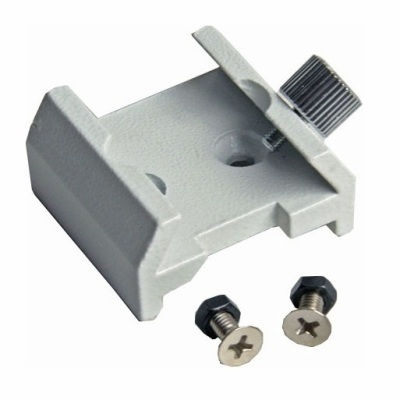
|
|
|
|
El Grillo posted:Looking for some advice on upgrading to a better finder scope. We use a Rigel Quick Finder which is great, super open view and very simple. Really easy to find stuff with. But the mount is awful. It just kind of has to be stuck on the tube. The same goes for the Telrad so far as I can see. I have a couple of larger dobs - 10" and 16". I found that it's nice to use TWO "finders". One to point - Telrad, Rigel, red dot or green laser. Those help to point the scope to where I want to be. Then I use the other finder - a RACI to provide a magnified view and home in on the target. I wouldn't use a RACI by itself as it's hard to use it to point the scope alone. The combo works very well. If need your can get a dual mounting bracket for that dovetail mounting shoe and fit two devices for it. There's even brackets for three devices, but one might be too close to your focuser. On my 10" dob I use a Telrad plus a 50mm APM RACI. On the 16" dob I use an 80mm APM RACI. Both have helical focuser and I can use a variety of 1.25" eyepiece of my choice including those with crosshairs. Other types of RACI finders have built in eyepieces. I like to have options and passed on those. Just a side note, I forget which vendor has it, but I have see third party brackets for Telrads that allow them to be mounted on mounting shoes like your own. That way you don't have to stick a base to your tube and switch it from different scopes if you have more than one.
|
|
|
|
duodenum posted:Both scopes would be fantastic. The 12" is where these dobs start to feel like wheeling around unwieldy water heaters IMO. The 10 is about the same bulk as the 8, just a bit heavier and thicker, same length. Which is great for comfortable eyepiece height (no tall ladders in the dark), but the 10's focal ratio is shorter than the 8, which makes it more sensitive to collimation error. Thanks for this informative post. I've been a telescope owner for 5 days now and I'm doing my best to find good info on which eyepieces to start off with. I noticed that Celestron has a starter kit that looked practical, but when I checked prices at Anacortes Telescopes I discovered that their cheapest eyepieces are about the price of that whole Celestron set. It doesn't seem like there's any consensus on what magnifications are a good starting point, is that fair to say? It seems like eyepieces are a bit of a personal journey. I'm trying to avoid the temptation to buy lots of fancy stuff upfront and ladder up as needed, but when each individual eyepiece is like $150+ it feels like an awfully fraught decision. I got the Celestron 5SE and so far I'm loving it, but I'm absolutely baffled by the LCD display being more or less useless in temperatures below 30 F. Like... wouldn't they want to design a handset that can be used easily for more than half the calendar year for people in the northern hemisphere? Seems crazy.
|
|
|
|
Jewmanji posted:Thanks for this informative post. I've been a telescope owner for 5 days now and I'm doing my best to find good info on which eyepieces to start off with. I noticed that Celestron has a starter kit that looked practical, but when I checked prices at Anacortes Telescopes I discovered that their cheapest eyepieces are about the price of that whole Celestron set. It doesn't seem like there's any consensus on what magnifications are a good starting point, is that fair to say? It seems like eyepieces are a bit of a personal journey. I'm trying to avoid the temptation to buy lots of fancy stuff upfront and ladder up as needed, but when each individual eyepiece is like $150+ it feels like an awfully fraught decision. Don't buy a cheap eyepiece kit. The first real eyepiece I bought was an XCel-LX and it made my telescope experience SO much better than the cheap things that came with the scope. That kit is full of things just like the cheap things that come stock with telescopes. XCel-LX eyepieces are $100 each, Starguiders are $60, you mostly get what you pay for at each price point. With a 5" SCT maybe I would probably get a 7mm XCel-LX for about 178x for planets and other high mag targets. Your stock 25mm plossl will help you center things and will let you observe low mag objects. Next I'd get something in between, and by then you'll have experience to know what you like and don't like about what you already have. This is a great resource for Nexstar systems: https://www.nexstarsite.com
|
|
|
|
Jewmanji posted:It doesn't seem like there's any consensus on what magnifications are a good starting point, is that fair to say? quote:1X / 2X / 3X Magnification Protocol for eyepiece choice https://www.eyepiecesetc.com/1X_2X_3X_Magnification_Protocol_p/ep-selection-1x-2x-3x.htm
|
|
|
|

|
| # ? May 29, 2024 00:51 |
|
duodenum posted:Don't buy a cheap eyepiece kit. The first real eyepiece I bought was an XCel-LX and it made my telescope experience SO much better than the cheap things that came with the scope. That kit is full of things just like the cheap things that come stock with telescopes. XCel-LX eyepieces are $100 each, Starguiders are $60, you mostly get what you pay for at each price point. With a 5" SCT maybe I would probably get a 7mm XCel-LX for about 178x for planets and other high mag targets. Your stock 25mm plossl will help you center things and will let you observe low mag objects. Next I'd get something in between, and by then you'll have experience to know what you like and don't like about what you already have. Agreed - avoid the shiny silver boxes of meh. The eyepieces have nonimpressive narrow views and the eye relief sucks. Even the stupid box will rust if exposed to moisture for prolonged periods. X-Cel LX eyepieces are decent with 60 degree AFOV. You can get them cheaper from AliExpress vendors for under $70 each. https://www.aliexpress.us/item/2255799937064540.html?gatewayAdapt=glo2usa&_randl_shipto=US Today is also the last day of the Baader Hyperion sale - $119 each. They are good performers in scopes with focal ratios of f/6 or so and slower. The Astronomics website sells the Astro-Tech eyepieces which have a variety of types that are strong performers at varying AFOV. Don Pensack can be found on the Cloudy Nights forums as Starman1 and he's the go-to eyepiece guru expert. Very nice guy to talk to over the phone as well when I placed an order for some gear.
|
|
|



